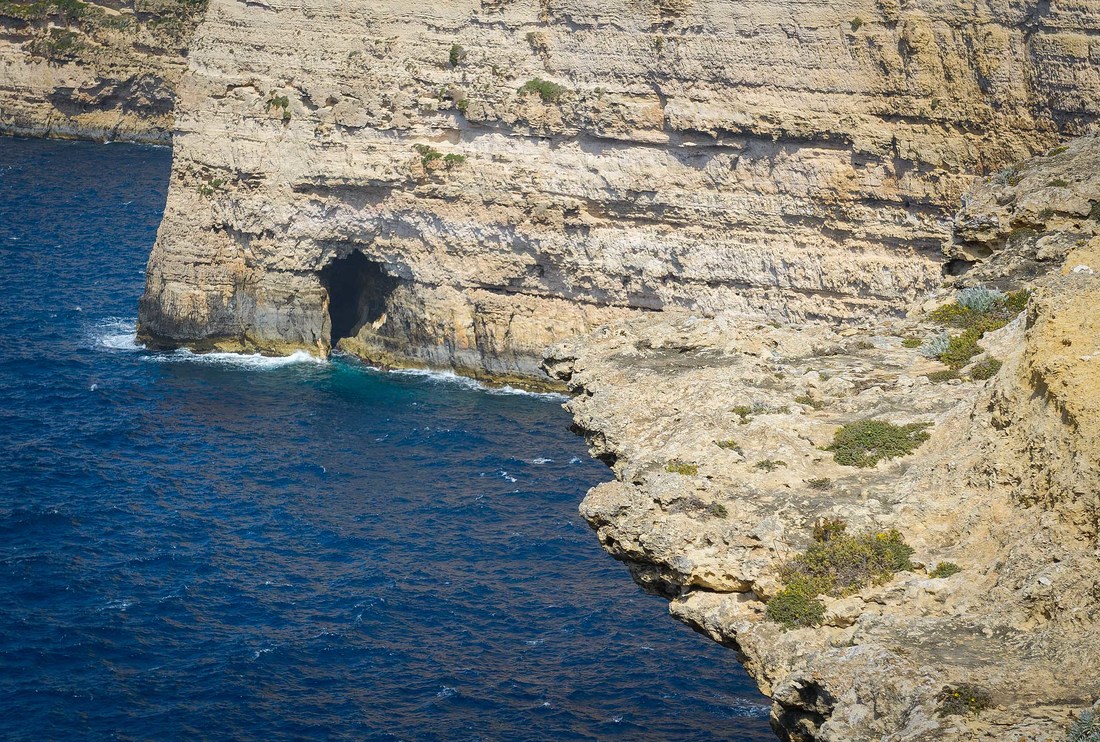Where is Dwejra?
The site of Dwejra is located in on the West coast of Gozo, an island in the Maltese archipelago lying in the middle of the Mediterranean Sea.
Why should I visit Dwejra?
|
Dwejra is a site of immense geological, ecological, and astronomical importance, not only locally but, on many counts, on an international scale. It features some unique geomorphological features such as a high concentration of sinkholes (you can read more about them here), hosts a number of different organisms including some species endemic to the Maltese islands (you can read more here), and is the best place left on the Maltese archipelago from where to carry out astronomical observations due to relatively low levels of light pollution (more on this here). Moreover, it hosts a number of interesting archeological remains.
Dwejra is a must-visit for all nature lovers, boasting a number of hiking trails with breathtaking scenery. Those who love adventure and are up for dipping their head below water, Dwejra is a prime diving site with world-famous dive spots such as the Blue Hole and the Inland Sea tunnel. Dwejra has something for everyone, and should be on your itinerary when visiting Malta. |
Many people think of Dwejra as being just the area around the Inland Sea and the site where the Azure Window used to stand. (Indeed, for many Dwejra was just about this arch, while being totally oblivious of the myriad other wonderful features whose importance far exceeds that of the collapsed Azure Window itself). First off, as you can also see in the map further down below, the site of Dwejra extends for a considerable distance beyond where the bus will drop you. A walk away from the beaten path will reveal spectacular vistas of cliffs, caves, freshwater pools - and even a natural arch! (No, it's not the Azure Window we're talking about here.)
Dwejra is a site where the forces of nature have shaped a beautiful landscape after years and years of wind, rain and sea erosion. And this process is still ongoing: the future of Dwejra is still being moulded by the same forces that have been at work for hundreds, thousands, and indeed millions of years. |
|
Apart from the wide-ranging geological and geomorphological features of Dwejra, diverse habitats are found at this site. These habitats host a number of species, some of which are endemic to the Maltese islands. Indeed, some, such as the lizard subspecies Podarcis filfolensis ssp. generalensis, are only to be found at Dwejra. Others, such as the plant Helichrysum melitense are only found in sizable numbers in parts of Dwejra.
|
|
TOPONYMY OF DWEJRA
To the right is a detailed look at the area of Dwejra. This figure includes many of the place names (in Maltese) of the site.
When looking at this map you might want to keep in mind the meaning of the following Maltese words which you'll find interspersed among these place names:
|
|
*This map has been adapted and recreated by the author from a figure appearing in the article 'It-Toponomastika t'Għawdex' in L-Imnara by Alex Camilleri. This article contains a treasure trove of information about the toponymy of Dwejra. An online scan of the article is available here.
|
How can I reach Dwejra?
If you are travelling from Malta you will first be getting a ferry that will berth at Mġarr Harbour in Gozo.
From here you can hop on any of these bus routes to the capital of Gozo, Victoria: 301 (fastest), 323, or 303 (longest, as it goes to other places first).
From Victoria you can get bus bus 311 to Dwejra.
From here you can hop on any of these bus routes to the capital of Gozo, Victoria: 301 (fastest), 323, or 303 (longest, as it goes to other places first).
From Victoria you can get bus bus 311 to Dwejra.
Unless otherwise stated, all content (including text, animations and images) on this website is copyrighted by Joseph Caruana.
If you would like to use any of this content elsewhere, ask for permission first.
If you would like to use any of this content elsewhere, ask for permission first.






